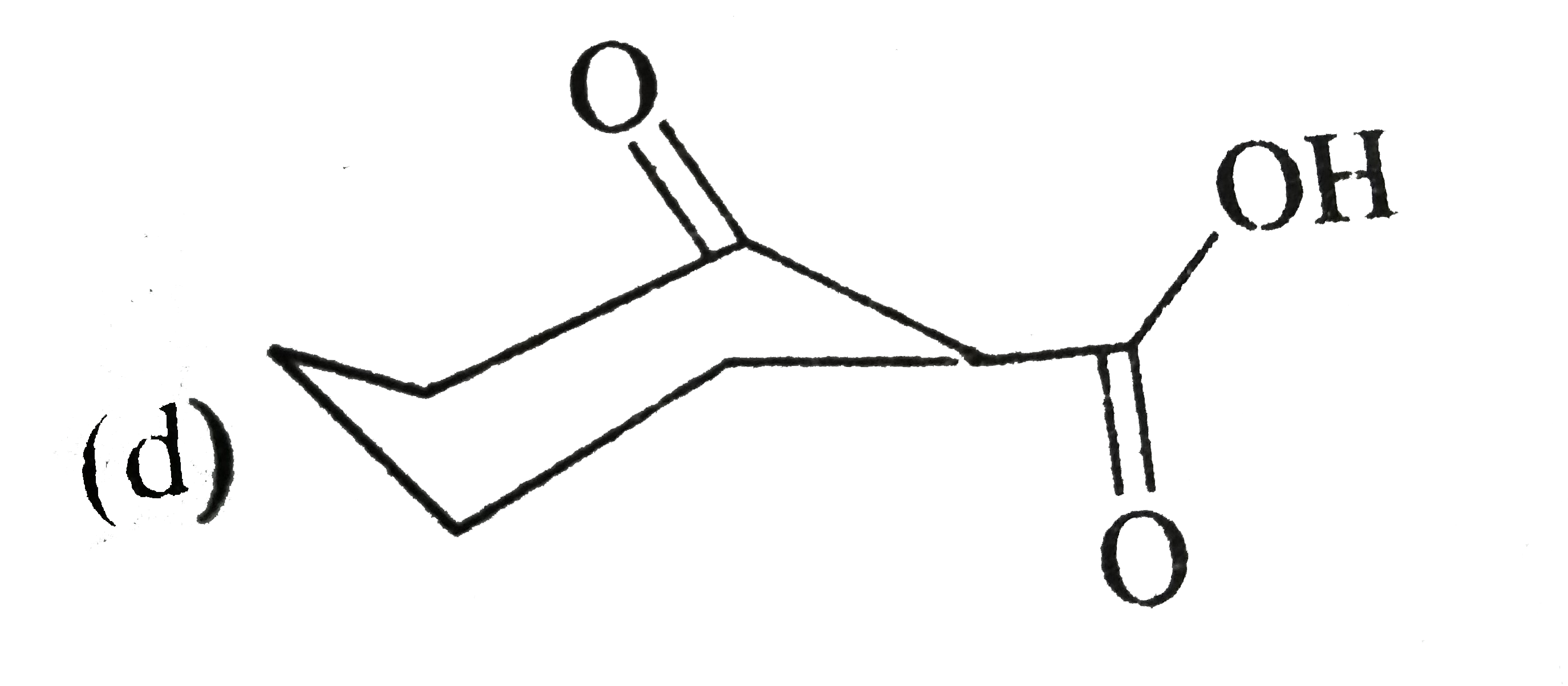Which of the following btea-keto carboxylic acid does not undergo decarboxylation on heating?
A

B

C

D
None of these
Text Solution
The correct Answer is:A
β-Keto acids undergo decarboxylation through the keto form via a cyclic T. S. which results in the formation of the enol form of the ketone product. The enol then changes to the more stable keto form. If decarboxylation of the given β-keto acid could follow this route, then:

If we draw the acid as shown in (I), it can be seen that the methylene group forms a bridge, which is perpendicular to the cyclohexane ring.

The enol produced would have a double bond in the 1, 2-position. Thus, C - 1 is sp2 - hybridised and therefore the bond leading to the methylene bridge (1, 3) would have to be coplanar with the groups joined to C - 2 in the enol, i.e., the bridge would have to flatten. This would require the normal valency angles (~109.5∘) to change to ~120∘. Even if a compromise situation occurred, i.e., all bond angles involved (∠s 1, 3, and 4) underwent change, the resulting strain would be very large, too large to be expected for it to occur. Hence, it is reasonable to argue that since decarboxylation does occur, it does so through a route requiring a much higher activation energy than that required for the usual route. Hence the difficulty of decarboxylation. (Bredt.s rule)
|
Similar Questions
Knowledge Check
Which of the following β-keto carboxylic acid does not undergo decarboxylation on heating ?
A B
B C
C DNone of these
DNone of theseWhich of the following carboxylic acids do not undergo decarboxylation simply on heating?
AF3C−O||C−OHBH2C=CH−O||C−OHC D
D
Which of the following carboxylic acids do not undergo decarboxylation simply on heating?
AF3C−O∣∣C−OHBH2C=CH−O∣∣C−OHC D
D
Which of the following carboxylic acids undergoes decarboxylation most easily on heating?
View SolutionWhich of the following carboxylic acids undergoes decarboxylation most easily on heating?
View SolutionWhich of the following carboxylic acids undergoes decarboxylation on heating ?
View SolutionWhich of the following carboxylic acids undergoes decarboxylation most easily ?
View SolutionWhich of the following carboxylic acids undergoes decarboxylation easily ? Explain briefly
View Solution
